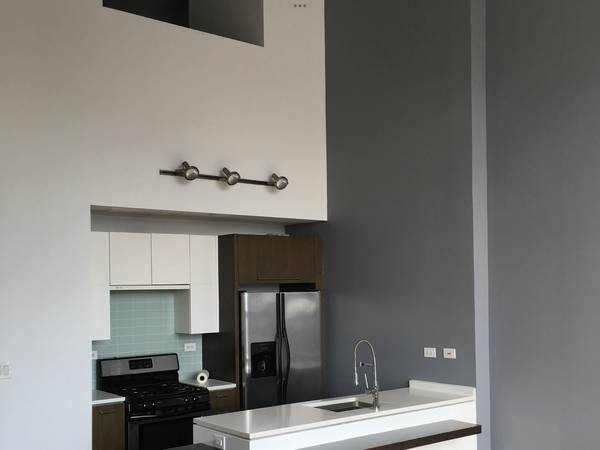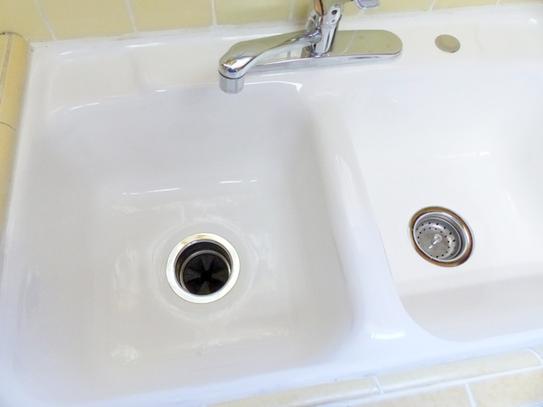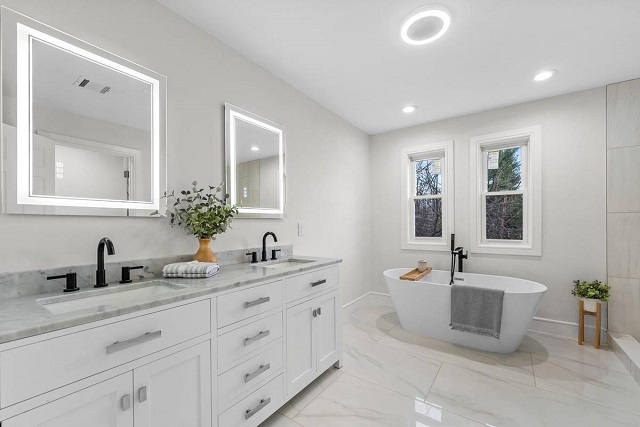Table of Contents
Planning Your Kitchen Redesign
Remodel a Kitchen begins with a well-thought-out plan which sets the groundwork for a smooth renovation process. Planning, arguably the most crucial step in the redesign process, not only involves visualizing your dream kitchen but also building a solid foundation that guides the rest of the renovation. Central to this is understanding your current kitchen space, its limitations, and how it can be transformed to fit your vision.
This process requires meticulous consideration of several aspects, such as the functional design, layout, storage requirements, lighting, among others. Color schemes and materials for cabinets, countertops, and flooring also play crucial roles in planning. It is also essential to realistically ascertain your expectations, needs, and lifestyle. Additionally, one must also thoroughly research recent trends and technological advancements in kitchen design to ensure that the new kitchen remains relevant for many years to come. This careful and comprehensive planning process will assist in creating a space that is both functional and aesthetically pleasing, ultimately resulting in a kitchen that you’ll love for years to come.
Setting a Budget for Your Kitchen Renovation
One of the most critical steps to consider is the process of budgeting. Developing a well-thought-out and comprehensive budget not only assists in maintaining financial discipline but also ensures that all aspects of the project are catered for without compromising on quality, efficiency or aesthetics.
Factors such as the scale of renovations, the quality, and type of materials, labor costs, professional fees, and unforeseen expenses all play a crucial role in determining the overall costs. Allocating a specific percentage of the budget towards each element could be beneficial. Generally, for kitchen renovations, cabinets account for approximately one-third of the budget, with appliances and installation taking up another third. The remaining budget usually covers countertops, flooring, and other additional costs. Further, it is advisable to set aside a contingency fund of about 20% of the total budget for unforeseen expenses. Embarking on a kitchen renovation without a robust budget may lead to financial strain or incomplete projects.
Selecting the Right Contractor for Your Project
Selecting an apt and proficient contractor is a pivotal part of any home renovation project, and indeed its success often largely relies on this all-important choice. When beginning this selection process, one must remember to undertake thorough research, which involves digging deep into a contractor’s background, their past undertakings, and most significantly, their clients’ reviews. Reading through the experiences of previous clients offers an unfiltered perspective about their work ethic, timeliness, and craftsmanship, thus assisting in making an informed decision.
Drawing up a tentative list of potential contractors based on recommendations and research is only the first step. The next vital stage involves organizing meetings with these shortlisted contractors to discuss the project in detail. These meetings not only offer an insight into their working style but also provide an opportunity to request a quote for the planned renovation work. After receiving their quotes, remember, the deciding factor should not be the cost alone but also their expertise, professionalism, and reputation. Ultimately, the chosen contractor should align with your vision, understand your needs, and be capable of bringing your dream kitchen to reality.
Designing the Layout of Your New Kitchen

One of the most essential steps in a kitchen renovation project is the creation of a functional and aesthetically pleasing layout. The primary focus should be on maximizing the usability and efficiency of the space. This can be achieved by employing the kitchen work triangle model which emphasizes the proximity of refrigerator, stove, and sink for convenience. Storage solutions should not be overlooked either as they considerably impact the utility of your kitchen.
Another critical aspect to consider is the factor of lighting. Substantial attention should be given to both natural and artificial sources of illumination. Using smart lighting designs can significantly enhance the workspace, mood and overall ambiance of the kitchen. For instance, task lighting over counters and cooktops ensure safety while preparing meals; ambient lighting aids in creating a warm welcome. Therefore, an effective layout design seamlessly integrates functionality, storage, and lighting aspects to provide a balanced and efficient kitchen layout.
Choosing the Right Materials and Finishes
When embarking on a kitchen redesign journey, selecting the perfect combination of materials and finishes is an essential part of the process. No two kitchens are identical, and the materials and finishes you choose should reflect your unique style, needs, and budget. There is an exhaustive range of options available in the market, including natural stone like granite and marble to engineered products like quartz for countertops. The choice of cabinets might range from solid wood to laminate, each offering differing levels of durability, maintenance, and cost.
Choosing the right materials extends beyond just the aesthetic appeal. Consider the practicality and durability of each of these materials in the context of your unique kitchen. For example, if you spend a lot of time cooking, a heat-resistant countertop such as granite might be a good choice. Finishes, too, play a crucial role, significantly affecting the look and feel of the kitchen. From glossy, matte, semi-glossy for cabinets, to polished, honed, or leathered for your countertops, you have a myriad of options to choose from. Every corner of your kitchen should be a reflection of your personal style imbued with practicality.
Purchasing the Necessary Appliances and Fixtures
A pivotal part of the Remodel a Kitchen process focuses on the acquisition of appropriate, high-quality appliances and fixtures that not only align with the overall aesthetic intent but also offer practical functionality required in a modern kitchen. Careful selection is imperative to ensure that the aesthetic flow of the kitchen remains undisturbed, while catering to the specific culinary needs of the occupants. Choosing appliances should be a thoughtful culmination of both visual appeal and functionality; your refrigerator, oven, stovetop, and dishwasher should reflect the style of your kitchen while offering the technological benefits contemporary appliances provide.
In addition to the necessitous appliances, fixtures such as faucets, sinks, and lighting play a significant role in delineating the vibe of your kitchen space. High-quality fixtures can dramatically elevate the aesthetic appeal and overall kitchen experience. An intuitive approach is deciding on a theme or style beforehand to ensure all elements of the kitchen complement each other. It’s essential these basics be planned for early in the kitchen redesign process to ensure optimal placement and integration into your new design, contributing to a seamless, coherent redesign that marries style and practicality.
Preparing for the Start of Construction
Before construction commences on your kitchen renovation, there are several crucial steps that need to be taken to adequately prepare. Minimizing disruption during this period is pivotal, and that necessitates strategic planning. Every appliance and piece of furniture must be removed from the kitchen to protect them from potential dust or damage. The process can be quite stressful so ensuring that you have a temporary cooking and eating plans in place is key to maintaining normalcy.
Furthermore, educating yourself about the construction timeline can help set realistic expectations for the renovation process. Communicate effectively with the contractor about the schedule and understand that delays are sometimes inevitable and a part of the process. Remember, patience is essential, and preserving open communication channels with your contractor will facilitate a smoother operation and ultimately, a successful kitchen renovation.
Understanding the Demolition Process
The demolition process is a vital aspect in the process of a kitchen remodel and should not be taken lightly. This stage is full of potential pitfalls and challenges that can significantly impact the rest of your project. Therefore, a clear and careful plan must come prior to any sledgehammer swings. Equally as important is the need to possess, or to hire someone who possesses, a comprehensive understanding of construction and underlying home systems.
One should never underestimate the importance of safety during demolition. Protective gear, like gloves, safety glasses and boots, are a necessity and not an option. Further, it is pivotal to be conscious of hidden dangers such as live electrical wires or plumbing pipes. An experienced contractor typically has the know-how to manage demolition safely and effectively, ensuring minimal impact to your home’s overall structure and systems. This process can be noisy and disruptive, but it’s a necessary step in achieving the kitchen of your dreams.
The Importance of Electrical and Plumbing Work
Electrical and plumbing systems serve as the backbone of any functioning kitchen. Maintaining an efficient layout for these systems not only ensures seamless operations but also safeguards the overall health and safety of the household. If overlooked, poor plumbing could lead to water damage, mold growth, and structural problems, while faulty electrical work may lead to a risk of electrocution, power outages, or even fires. Therefore, it’s crucial to plan and execute these aspects meticulously during your kitchen redesign.
Engaging experienced professionals for electrical and plumbing work is equally paramount. Their expertise aids them in making pragmatic decisions such as the optimal placement of outlets, best practices in pipework, and ensuring compliance with local building codes. They can anticipate potential challenges and provide effective solutions, preventing costly repairs down the line. Moreover, they have the necessary skill to balance aesthetics with functionality – neatly concealing wiring and pipes without compromising on access or efficiency. Without a doubt, careful attention to the nitty-gritty of electrical and plumbing work can make a world of difference to your kitchen renovation project.
Installing New Cabinets and Countertops
The heart of any kitchen lies in its cabinets and countertops. These elements not only provide functional value by offering storage and prep space, but they also contribute significantly to the overall aesthetic appeal of the room. The installation process typically follows the completion of electrical and plumbing work and should be handled with care to ensure longevity and durability.
In the realm of cabinetry, the market avails a plethora of choices pertaining to material, design, and finish. Hardwood, plywood, and medium-density fiberboard (MDF) stand out as the popular picks, each with its unique features and benefits. Similarly, for countertops, homeowners can select from a wide array of materials including granite, quartz, marble, and laminate, each offering diverse visual and functional properties. Hiring an experienced contractor ensures precise measurements and attention to detail during installation, maximizing utility and offering a close-to-flawless finish.
Adding the Finishing Touches: Paint and Backsplash
Once the cabinets and countertops are in place, the transformation of your kitchen is almost complete. Yet, the journey to a kitchen that’s both functional and stylish isn’t over. The next step is adding the finishing touches, such as paint and backsplash to bring your kitchen design together. Paint selection is primarily based on your personal aesthetic and design scheme. The colors can be bold or muted, but they should complement your new cabinetry, countertops, and appliances. Ceiling paint, in particular, is often overlooked but is crucial for adding an extra layer of sheen and elegance to the kitchen.
Unlike paint, the backsplash serves a more practical purpose. It provides a protectant against regular kitchen messes like splatters from cooking and spills. But it also plays a significant role in the visual feel of your kitchen. Whether you opt for a minimalistic white tile, a rustic brick, or a colorful mosaic, the backsplash should echo the overall design of your kitchen. To avoid overwhelming the space, it’s advised to find a balance between the backsplash and other key kitchen elements like the countertops. A harmonious blend takes your kitchen redesign from average to extraordinary.
Cleaning Up Post-Renovation
Upon the completion of your kitchen renovation project, the importance of thorough clean-up cannot be overstated. Post-renovation mess consists of dust, scrap materials, and possibly hazardous remnants such as nails or sharp metal pieces. It is imperative to remove all debris from the site to ensure it is ready for its intended use as soon as possible. The effectiveness of this process can have a lasting impact on the success and overall appeal of your renovation.
While it might be tempting to conduct the clean-up yourself in a bid to save costs, engaging professional cleaning services might be a more viable option. Professionals are equipped with the relevant safety gear and have been trained to handle all kinds of debris, including potentially hazardous materials. Moreover, professionals will guarantee that every corner is attended to, reducing the risk of future complications. This thorough execution not only ensures the safety of your living space but also that your renovated kitchen shines to its full potential.
Enjoying Your Newly Remodeled Kitchen
Once the dust settles, the tools are stored away, and your redesign is complete, it’s now time to truly indulge in the fruits of your labor. The newly remodeled kitchen does not only represent an aesthetic enhancement, but also a new space for creating and sharing lovingly prepared meals, hosting gatherings, and adorn your life with alluring aesthetics that craft a serene encapsulating environment.
Indeed, the importance of realizing your vision and enjoying its actualization cannot be understated. Your newly remodeled kitchen is an embodiment of your personal style, functionality, and adaptability that echoes your lifestyle. This genuine satisfaction goes beyond visual appeal and is amplified by the heightened functionality and efficiency that your new kitchen brings, offering an enriched culinary experience and fostering deeper connections between food, family, and friends in a rejuvenated setting.



